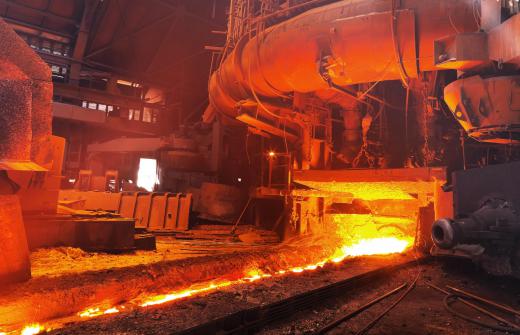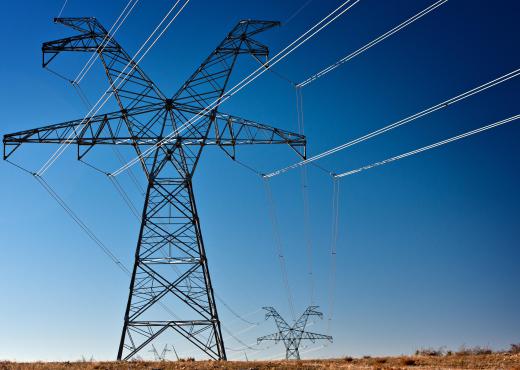What is Amorphous Metal?
 Michael Anissimov
Michael Anissimov
An amorphous metal is a metal with a disordered atomic structure, in contrast to most metals, which have a regular structure. These substances are also called metallic glasses, because one way of making amorphous metals resembles the procedure for making glass, but using metal instead of silica. Studies indicate that amorphous metals may be more than twice as strong as normal metal, and are ideal for military armor, weighing the same as ordinary metal. Because of the material's disordered structure, it is also more resistant to corrosion and wear.
Amorphous metals were first created at Caltech by Pol Duwez in 1957. Duwez created the amorphous metal by cooling an alloy (Au80Si20) from a liquid state in under a fraction of a second. The cooling rate had to exceed a million degrees Kelvin per second, so cooling the metal from the liquid state to a solid state had to occur in milliseconds. Cooling this quickly prevented the metal from crystallizing like a typical metal, giving it its unique amorphous structure. At the beginning, the forms of amorphous metal were limited, consisting mostly of thin ribbons, foils, and wires. These constraints were enforced by the necessity of a fast cooling rate.

Amorphous metal suitable for commercialization was first made in 1976 by C. Graham and H. Liebermann. They used a supercooled fast-spinning wheel to create bulk quantities of amorphous metal suitable for low-loss power distribution transformers, commercialized under the name Metglas. Amorphous metal can be quickly magnetized and demagnetized, leading to power savings when used in transformers on the electrical grid. 70–80% less power is consumed by amorphous metal transformers, reducing CO2 emissions and saving power. Today, amorphous metal transformers are used widely in India and China, where they have been used to successfully cut greenhouse gas emissions.

Throughout the 1980s, materials scientists experimented with different alloys, to decrease the necessary cooling rate for creating amorphous metals. They succeeded in bringing down the critical cooling rate from hundreds of Kelvins per second to just one Kelvin per second, making the manufacturing of bulk metallic glasses more feasible. In 2004, researchers succeeded in bulk amorphous steel, paving the way for wider commercialization of the material.
AS FEATURED ON:
AS FEATURED ON:












Discuss this Article
Post your comments